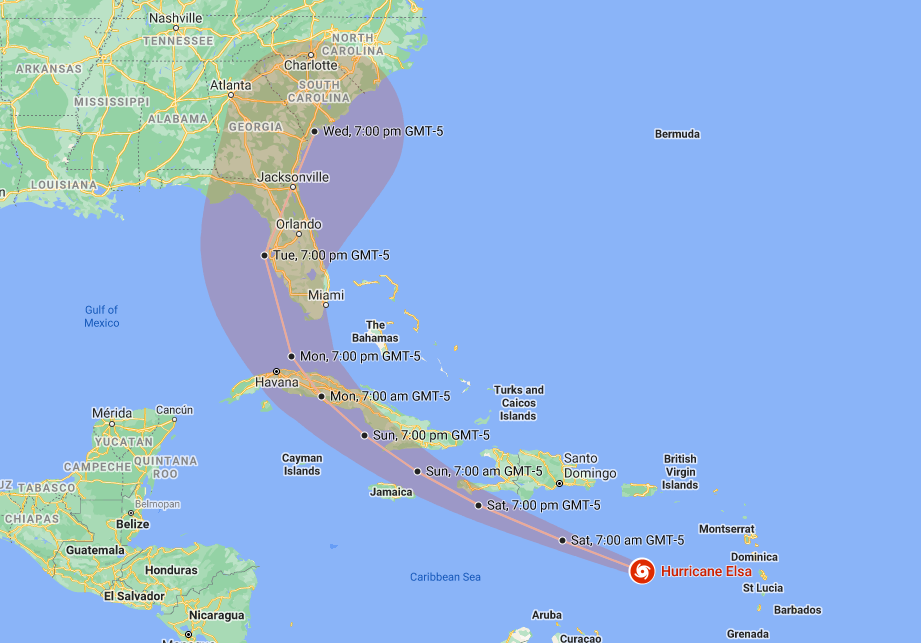Elsa strengthened into the first hurricane of the 2021 Atlantic season Friday, battering the eastern islands of the Caribbean.
As of 8 p.m. Eastern time, the center of the fast-moving Category 1 hurricane, which had sustained winds of 85 mph, was moving through the eastern Caribbean Sea, the National Hurricane Center said. The storm was about 475 miles southeast of Isla Beata in the Dominican Republic and was moving west at 30 mph.
“It is moving fast,” said Dennis Feltgen, a spokesperson for the National Hurricane Center in Miami. “We don’t see any significant strengthening during the next 36 to 48 hours.”
A hurricane warning was in effect for Jamaica and southern portions of the Dominican Republic and Haiti. A hurricane watch, in which hurricane conditions are possible but are not expected, was in effect for various Cuban provinces.
The storm was expected to continue moving across the eastern Caribbean Sea on Friday evening, nearing the southern coast of Hispaniola late Saturday. By Sunday, the storm is expected to move toward Jamaica and the eastern provinces of Cuba, and then toward the island’s central and western provinces Monday.
A tropical storm warning was in effect for the northern coast of Haiti and the southern coast of the Dominican Republic.
Rainfall of up to 15 inches, which could lead to isolated flash flooding and mudslides, was forecast for parts of the Caribbean.
Elsa could also affect the Florida Keys and other parts of Florida early next week, the center said. The storm was being watched closely in South Florida, where it could potentially complicate rescue work at the site of the collapsed condominium building near Miami.
On Thursday, Kevin Guthrie, director of the Florida Division of Emergency Management, said, “I want to assure you: The state will continue to support their local partners in the Surfside response.”
Guthrie said some of his top deputies would remain at the condo site even if he had to travel elsewhere in the state to respond to Elsa. He added, “We are accustomed to running three or more disasters at the same time.”
Feltgen said there was “a lot of concern” because the cone of the hurricane’s projected course included the entire Florida Peninsula.
“Impacts are going to be inside and outside that cone,” he said. “There is a lot of uncertainty.”
He added that people in Florida should “monitor the latest updates and check your hurricane supplies.”
Elsa, the fifth named storm of the 2021 Atlantic hurricane season, formed as a tropical storm Thursday.
Ana became the first named storm of the season May 23, making this the seventh year in a row that a named storm developed in the Atlantic before the official start of the season, June 1.
The links between hurricanes and climate change are becoming more apparent. A warming planet can expect to experience stronger hurricanes over time and a higher incidence of the most powerful storms — though the overall number of storms may drop because factors like stronger wind shear might keep weaker storms from forming.
Scientists with the National Oceanic and Atmospheric Administration forecast that there would be 13-20 named storms this year, 6-10 of which would be hurricanes, and 3-5 major hurricanes of Category 3 or higher in the Atlantic.
Last year, there were 30 named storms, including six major hurricanes, causing meteorologists to exhaust the alphabet for the second time and move to using Greek letters.
It was the highest number of storms on record, surpassing the 28 storms in 2005, and included the second-highest number of hurricanes on record.
This article originally appeared in The New York Times.


